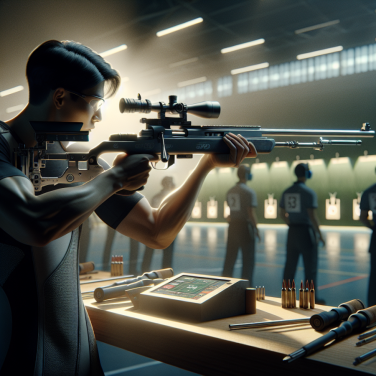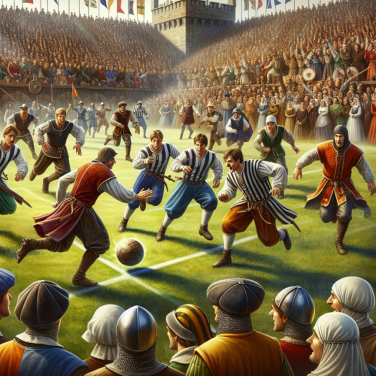Essential Skills and Techniques for Dominating Canoe Polo
Canoe polo, often referred to as kayak polo, is a dynamic and physically demanding team sport played on water. It combines elements of water polo, basketball, and kayaking in a unique and exciting way. Players must be adept in a variety of skills and techniques to excel in the sport. Here are some skills and techniques vital for dominating the game of canoe polo:
**Paddling Proficiency**: Mastery of the kayak is the cornerstone of success in canoe polo. Athletes must be able to paddle quickly and maneuver with agility. Forward, backward, and sweep strokes must be executed with precision to maintain control of the kayak and to reposition effectively on the field of play. Swift turns and stops can be the difference between scoring a goal or letting one slip through the defense.
**Ball Handling Skills**: Canoe polo players must have superior hand-eye coordination to manage and manipulate the ball. This involves dribbling, passing, and catching with one hand while using the paddle with the other. Being ambidextrous is advantageous, allowing players to switch hands swiftly and keep opponents guessing.
**Shooting Techniques**: Scoring goals requires players to have powerful and accurate shooting techniques. A familiarity with various shots such as the sweep shot, push shot, and flick shot is necessary. Players need to be able to shoot with both power and precision from different angles and positions, often while under pressure from defenders.
**Eskimo Roll and Brace Strokes**: In the rough-and-tumble environment of a canoe polo match, capsizing is common. Players must master the Eskimo roll to right themselves quickly without needing to exit their kayaks. In addition, brace strokes are essential for maintaining balance and preventing capsizes during gameplay, especially when receiving a hit or block from an opponent.
**Tactics and Positioning**: Understanding the tactical aspects of canoe polo is paramount. This includes everything from positioning for defense and offense, to executing set plays, to understanding the importance of spacing and timing. Players must be able to read the game, anticipate the opponent's moves, and communicate effectively with their teammates.
**Agility and Core Strength**: A player's physical fitness, especially core strength, is vital in enabling quick movements and maintaining balance within the kayak. Agility exercises and core workouts enhance a player's ability to perform explosive movements, critical in both offensive strikes and defensive maneuvers.
Read also:
Exploring the World's Top Destinations: Where Golf is Great
Strategic Team Play: Coordinating on the Water for Canoe Polo Success
Strategic team play is at the heart of mastering canoe polo, a dynamic and challenging sport that combines elements of water polo, basketball, and kayaking. Teams must work together flawlessly to maneuver their canoes, execute strategies, and score against their opponents. Coordination on the water is paramount to success in this sport, where every player's movement can spell the difference between victory and defeat.
Central to coordinating on the water in canoe polo is effective communication. Players must be adept at using both verbal signals and non-verbal cues to convey their intentions, call for passes, set up defensive formations, or orchestrate offensive plays. Teams often develop a system of shorthand commands to communicate quickly and efficiently amid the noise and chaos of a match. This can include anything from simple hand gestures indicating the direction of play to coded shouts that inform teammates about an opponent's position or potential strategy changes.
Positioning is another critical aspect of strategic team play. Much like in other team sports, each canoe polo player has a specific role that usually aligns with their strengths and skills, such as speed, ball handling, or defensive tenacity. For instance, one player may excel in the role of a sprinter, responsible for fast breaks and quick offensive strikes, while another might serve as a point defender, anchoring the team's defense and providing stability. Understanding and maintaining these positions during the game is essential to creating a cohesive unit.
Defensive coordination relies on teamwork and spatial awareness. Zone defense is a common tactic, where each player is responsible for a section of the water rather than an individual opponent. This requires players to be vigilant and reactive, as they may need to switch marks or provide coverage for a teammate who has ventured out of position. Press defense is another strategy where players aggressively mark their opponents, attempting to disrupt the opposing team's playmaking ability and force turnovers.
Offensively, teams must also operate in harmony. Setting screens, using feints and decoy movements, and executing precise passes are all part of a well-oiled offensive machine. Timing is crucial, as delays or miscalculations can lead to missed opportunities or counterattacks by the opponent. Players must also understand when to take individual initiative and when to rely on the collective effort, balancing the drive to make an impactful play with the risk of leaving the team vulnerable.
Canoe polo teams often employ set plays that they have practiced extensively.




